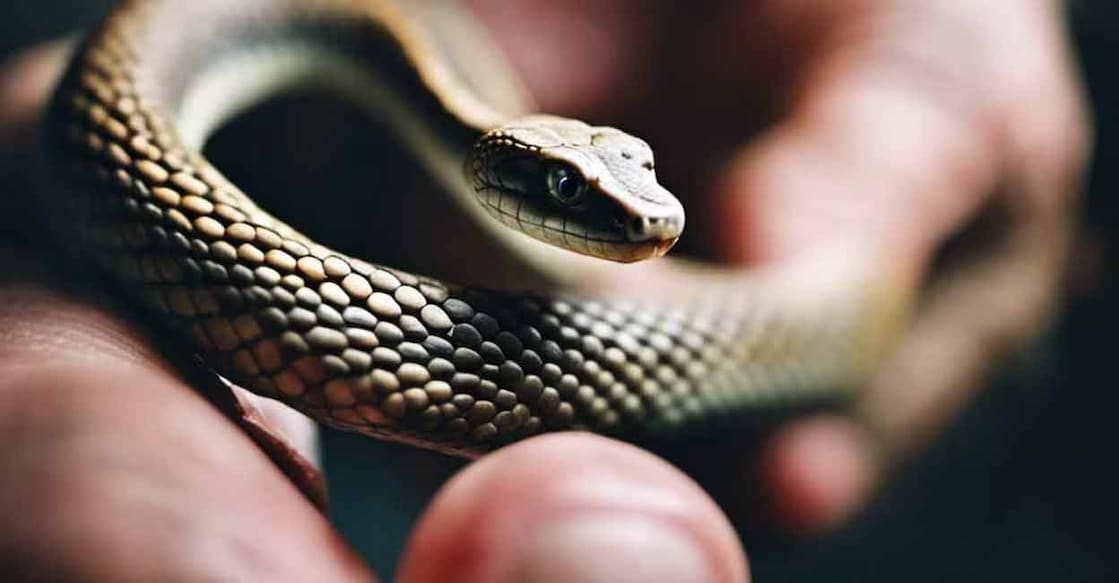How to survive and stay safe from snakebites? Why you shouldn’t run

Mail This Article
While taking leisurely walks in Kerala’s verdant landscapes can sound quite refreshing and dreamy, everyone who is aware of the state’s climate is generally alert about one factor – the presence of snakes. While they are crucial to our ecosystem, snakebite is quite a common occurrence here. The state is working towards eliminating snakebite deaths by 2030 and increasing the local production of antivenom. Kerala is also attempting to develop snake antivenom within the state itself, Forest Minister A.K. Saseendran said recently. Here’s everything you need to know about surviving a snakebite and staying safe in Kerala.
Beware of these snakes
According to Abeesh K A, Facilitator of SARPA app, Kottayam, the most venomous snakes of Kerala are cobra, saw scaled viper, Russell's viper and common krait. "King Cobra is also extremely venomous, but the cases of its bites are extremely rare. It's also mostly found in forest boundary regions. Therefore, it is not generally included in the list of venomous snakes of the state," he explains.

Snakes are generally more afraid of humans than humans are of them. They usually retreat quietly and avoid confrontation unless provoked. After swallowing the prey, they typically rest calmly. Snakes attack humans only when they feel threatened. Do not walk at night without proper lighting. Making sound by tapping a stick or your feet while walking, especially in dark areas, can help avoid accidental encounters with snakes. Snakes cannot hear airborne sounds, such as human speech. However, they are sensitive to ground vibrations and can detect movements, sensing the presence of other living beings. Do not forget to wear thick shoes or gum boots that cover your knees while walking at night.
Difference in venom
The king cobra spreads its hood to display its mightiness and preys during the day, while cobras, kraits and vipers hunt for prey at night. Besides, the amount of venom released by each snake is different, as well as how they affect the organs of the human body. The king cobra can release around 20 – 25 ml of venom that swiftly enters the bloodstream and affects the nervous system. It is enough to kill an elephant or even 20 human beings.
Dry bites
As per reports, half of the snakebites reported in the state are dry bites, in which no venom is released. Although it may not lead to death, the victim should still seek medical treatment. Venom is, in fact, toxic saliva that facilitates the immobilisation and digestion of prey. Snake population generally increases after a flood or the first rain of the season.

How to survive a snakebite?
The key to surviving a snakebite is to stay calm and seek medical attention as soon as possible, says Abheesh. The blood flow gathers pace when you are scared, swiftly spreading the venom. The body movements should be limited. "It is not advised to walk or run after being bitten by a snake, as it can spread the venom. Motivate victims to be calm and mentally strong. Position your body where the snake bit you, lower than your heart level. Lie down on your left side, folding your left palm and placing your head on it. If you're taking the person on a bike, tie them securely to the rider, as they may faint on the way," he says.
It is better to take the patient at the earliest to a speciality hospital where antivenom is available. The government has directed all taluk hospitals to stockpile sufficient antivenom to ensure timely treatment without delay.
According to the Forest Department’s records, there are approximately 114 species of snakes in Kerala. However, very few of them are considered venomous.
SARPA app
Snake Awareness Rescue and Protection App (SARPA) designed by the forest department could be downloaded from play store. You could report the presence of a snake in your house or in the vicinity via the app. Trained snake catchers would come to the location to catch the snake. The user should enable the location in their mobile phone, click the snake’s picture and then upload it in the app.

